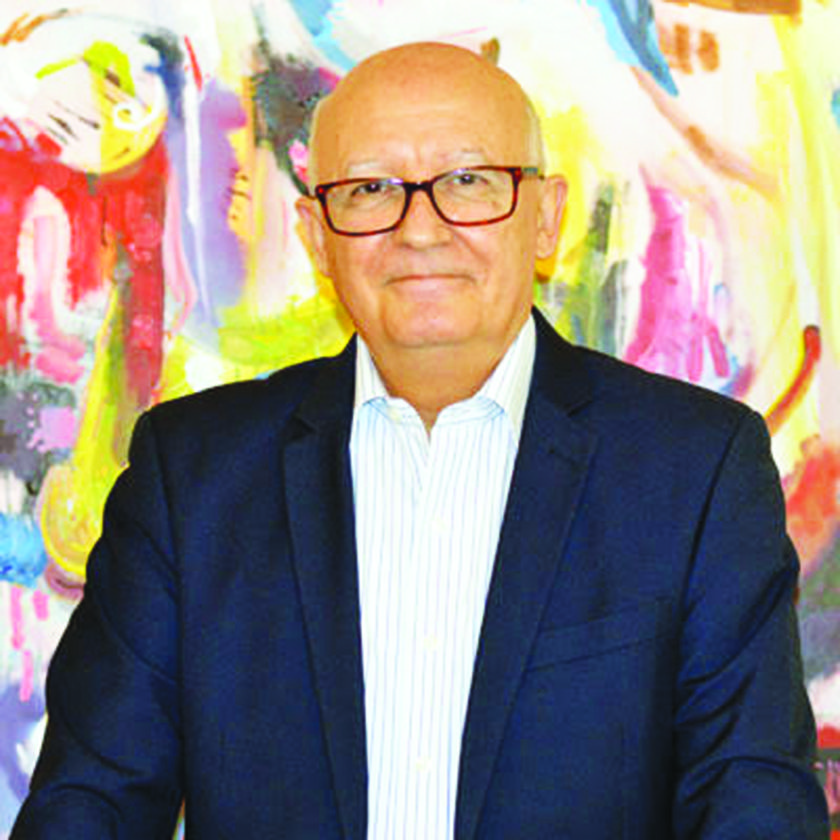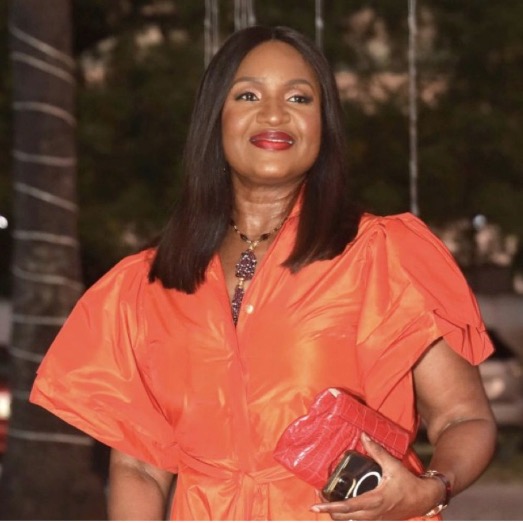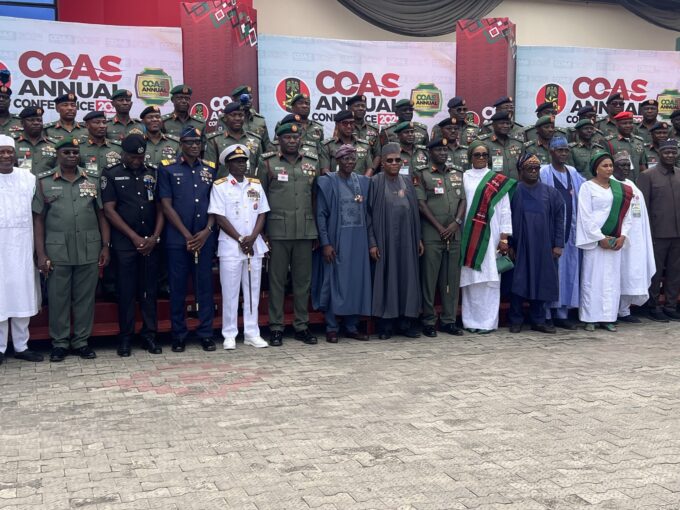Jess Castellote
A few weeks ago, I watched a teenage girl—a student at Pan-Atlantic University—standing silently before a sculpture by Chris Afuba in our museum, the Yemisi Shyllon Museum of Art. She was an island of stillness amid her classmates taking selfies, checking phones, chatting about deadlines. But she stood anchored, as if the artwork had pulled her into a private conversation. She didn’t reach for her phone. She didn’t call over a friend. She simply looked. From across the gallery, I couldn’t know what was going on in her mind, but I recognised something in her posture—a familiar attentiveness that transcends casual observation. In that moment, she wasn’t just seeing an object where wood meets metal. She was experiencing something deeper. The sculpture had become a bridge between worlds. But something about her posture, her stillness, felt familiar. I, somehow, understood. I had similar experiences in the past. Times when, in front of an exceptional artwork, I felt myself drawn into something beyond the canvas. Seeing the work as if it was alive, pulsating softly. Times when I wasn’t interpreting or analysing. When I was simply present. Moved. These rare occasions when the world fell away for a moment, and I felt as though I had touched something just beyond reach.
This scene of the girl in front of the sculpture by Afuba matters more than ever in our digital age, where quick consumption has replaced contemplation. Instagram-worthy moments outdo genuine connection. I read recently that as museum attendance has rebound post-pandemic, visitors are spending less time with each artwork—an average of just 28 seconds, according to some studies.
What exceptional artworks possess that gives them such power? They make the invisible visible. Art, at its best, creates a portal. Most days, visitors rush through galleries half-distracted, but occasionally something cuts through. The surface of a painting, the shape of a sculpture reaches out and stops us cold. We connect not just with an object, but with a feeling, a memory, a truth we cannot name.
When I speak of the “invisible” in art, I’m not invoking the supernatural. I mean the intangible things that make us human: love, grief, wonder, sadness, memory, longing, conscience, presence, soul, God. We cannot photograph these directly, yet they define our humanity more than anything we can touch. Through art, these realities find a form. A gesture. A presence. That’s probably what the girl experienced with Afuba’s sculpture—its contrast of wood and metal, organic curves meeting industrial edges, sparked a quiet recognition, a moment of inner clarity. Not analysis, but revelation.
This is the paradox of art: it is entirely material, and yet it helps us reach what is immaterial. Powerful artworks don’t tell us what to feel. They create space where our own inner lives awaken. Where shape and colour speak in a language we didn’t know we understood.
Of course, not all art achieves this. Much of what fills galleries today is merely decorative or commercial. Works created to be seen rather than experienced. These works catch the eye but leave the soul untouched. Some are well-crafted but empty, more about style than substance. In a world moving at lightning speed, both artists and audiences often settle for surface gloss.
That’s why the moment with the girl felt important. It wasn’t dramatic. But it was real. When that young woman stood gripped before the sculpture, she was probably experiencing not just what she saw, but realities she could not see—a momentary revelation of what normally remains hidden from view. Her quiet attention revealed something increasingly rare: reverence. Not for the museum or artist, but for the encounter itself. For the possibility that something meaningful was unfolding between her and the sculpture.
The invisible in art encompasses memory and history—both personal and collective—that resurface through images and textures. It includes the spiritual and transcendent dimension: that quiet sense of something beyond us that certain works mysteriously evoke. It embraces human dignity and presence, as in portraits that reveal more than appearances. And it encompasses meaning itself: values and insights that resist literal explanation but become perceptible through metaphor, symbol or silence.
For that student, the sculpture became a mirror reflecting something deeper than her physical self—her feelings, questions, and emerging identity. These moments matter profoundly. They remind us that even in an age of algorithms, we remain beings of feeling and spirit.
Art’s spiritual potential remains one of its most overlooked dimensions. From cave paintings to Gothic cathedrals, from Yoruba masks to minimalist canvases, art has been our way of reaching beyond the material world—not to escape it, but to deepen our relationship with it. No specialised knowledge required. A great artwork—and there are few of them—moves you without explanation. It invites silence. It simply opens a space—intimate, surprising—where something happens. It doesn’t shout. It doesn’t demand. It holds a conversation, if you’re willing to enter it. Something you might not be able to describe, but which you carry with you after you leave. The best artists understand this.
I witnessed this truth once in Ibadan, at a friend’s home. In a corner stood an old Yoruba carving—weathered wood, unadorned, almost forgotten. It wasn’t there for display. It was simply present. When I asked about it, my friend spoke of it not as an artwork, but as a witness. A companion. That sculpture had stood through years of silence. It wasn’t asking for admiration. It was asking to be remembered.
Today, we risk losing this depth. We frequently reduce art to investment, content, or branding. Market value overshadows meaning. Yet art’s most vital role has always been different: it gives shape to what cannot be said. It carries the invisible for us—and with us.
And sometimes, as I believe happened with that student, the boundary between viewer and artwork dissolve. The sculpture wasn’t just an object—it became a portal. The most powerful works don’t simply show what we already know. They surprise us. They reveal what we had not guessed or expected, what we hadn’t noticed was missing. They stretch perception beyond the physical into emotional and spiritual dimensions.
So, when you next find yourself moved by art, pause. Listen. Ask yourself: what invisible reality is now being made visible? In that space between seeing and feeling, something essential could be happening. Our capacity for perception expands. Quietly. Deeply.
Because meaningful art doesn’t shout. It whispers. It lingers. It leaves traces. It reminds us that we are more than consumers or data points. We are human beings—with depth, with soul, with longing. The visible helps us reach the invisible. It doesn’t give us answers, but it offers images, shapes, and stories. And in doing so, art does something quietly profound: it helps us see.
And that girl in the museum? I don’t know what specifically she saw in Afuba’s sculpture. But I know with certainty that something happened. In that meeting, something invisible briefly appeared. And in a world increasingly satisfied with surface, that silent encounter represents nothing less than an act of resistance. And that is enough.
•Castellote, PhD, is the Director,Yemisi Shyllon Museum of Art, Pan-Atlantic University

















Leave a comment